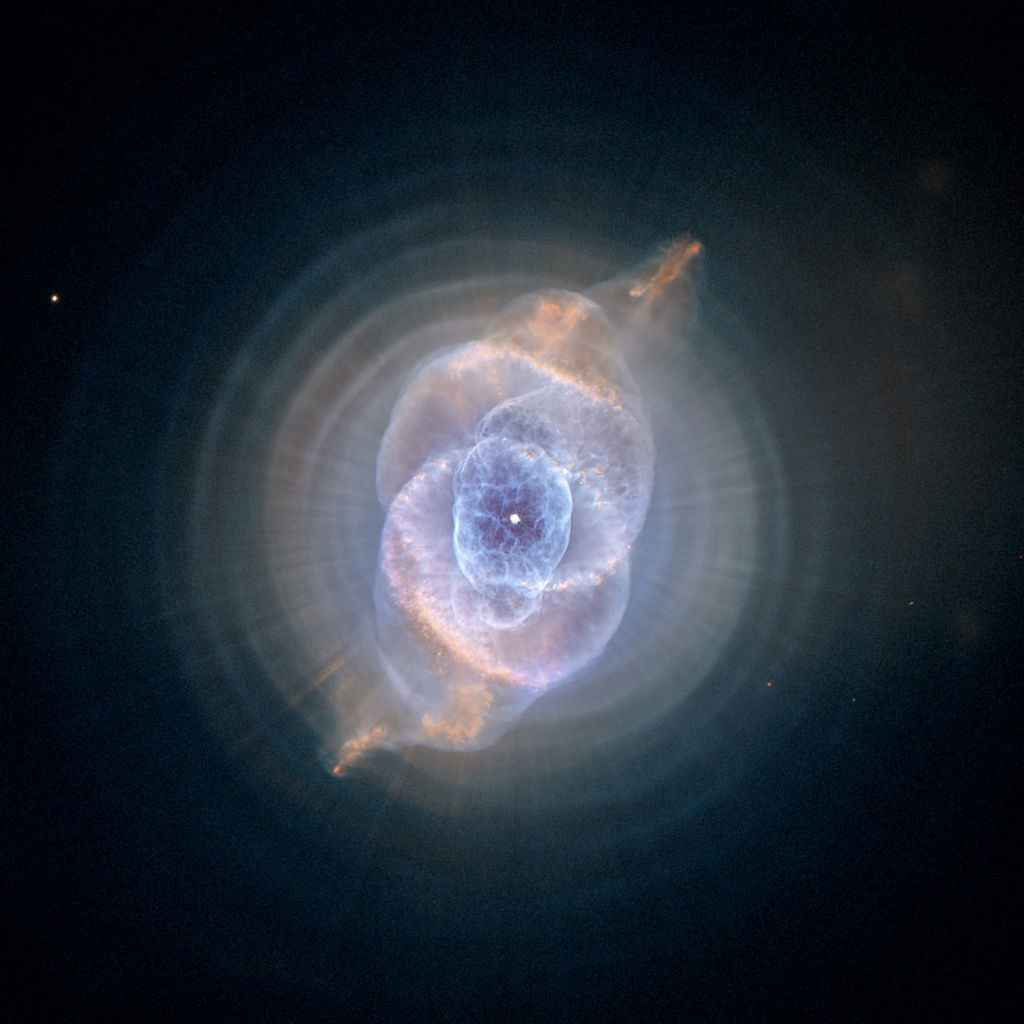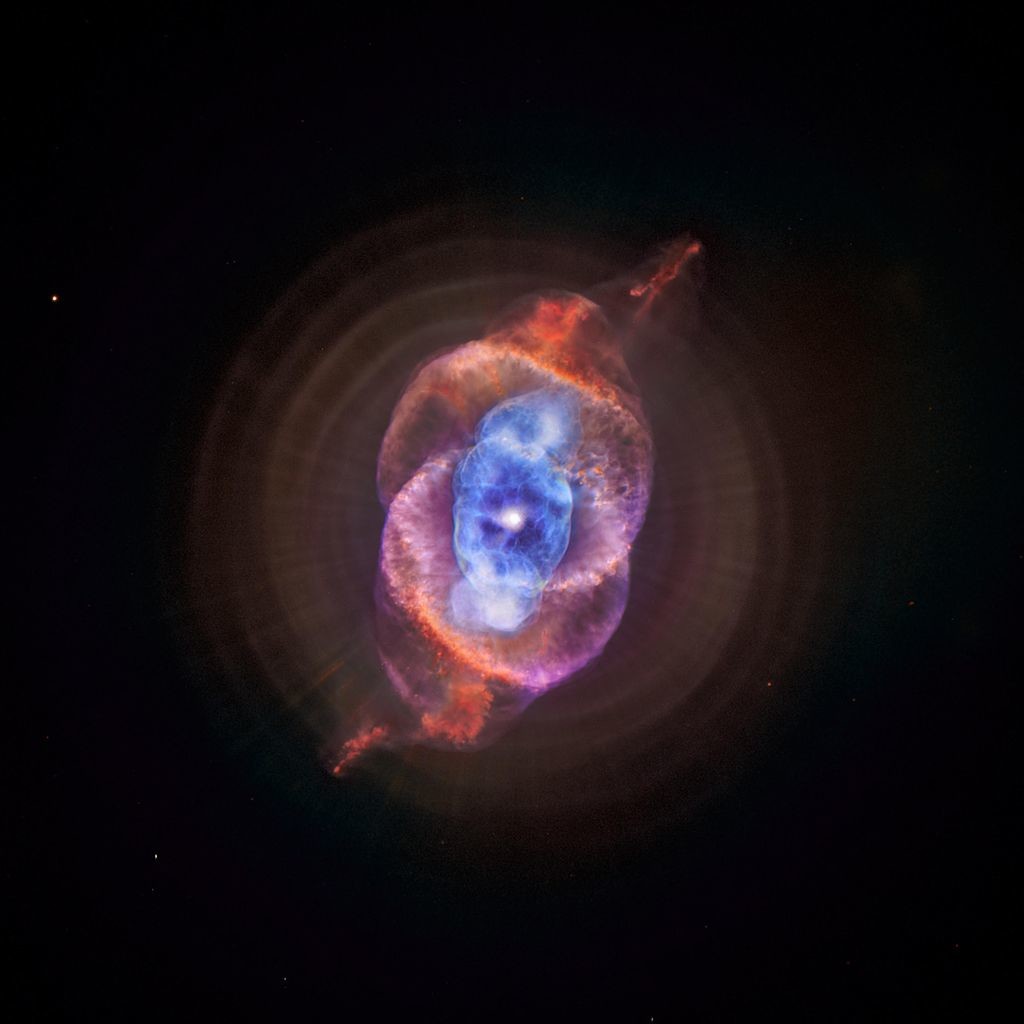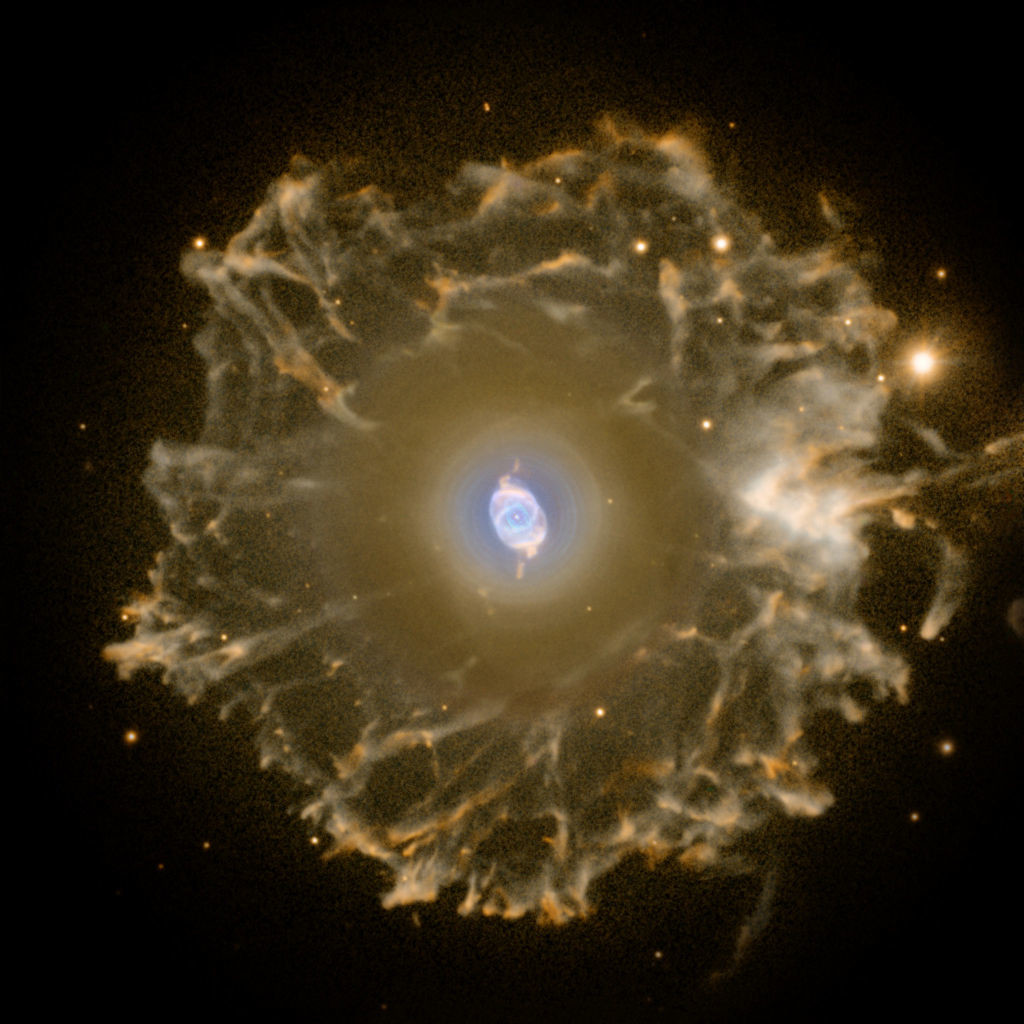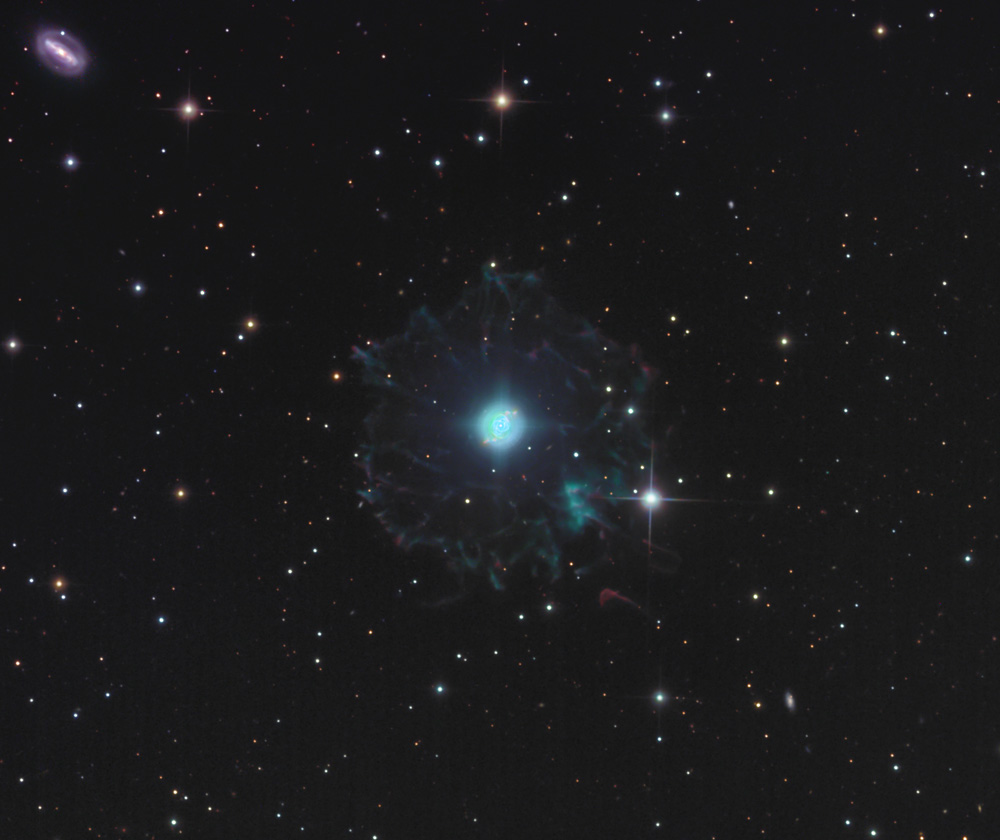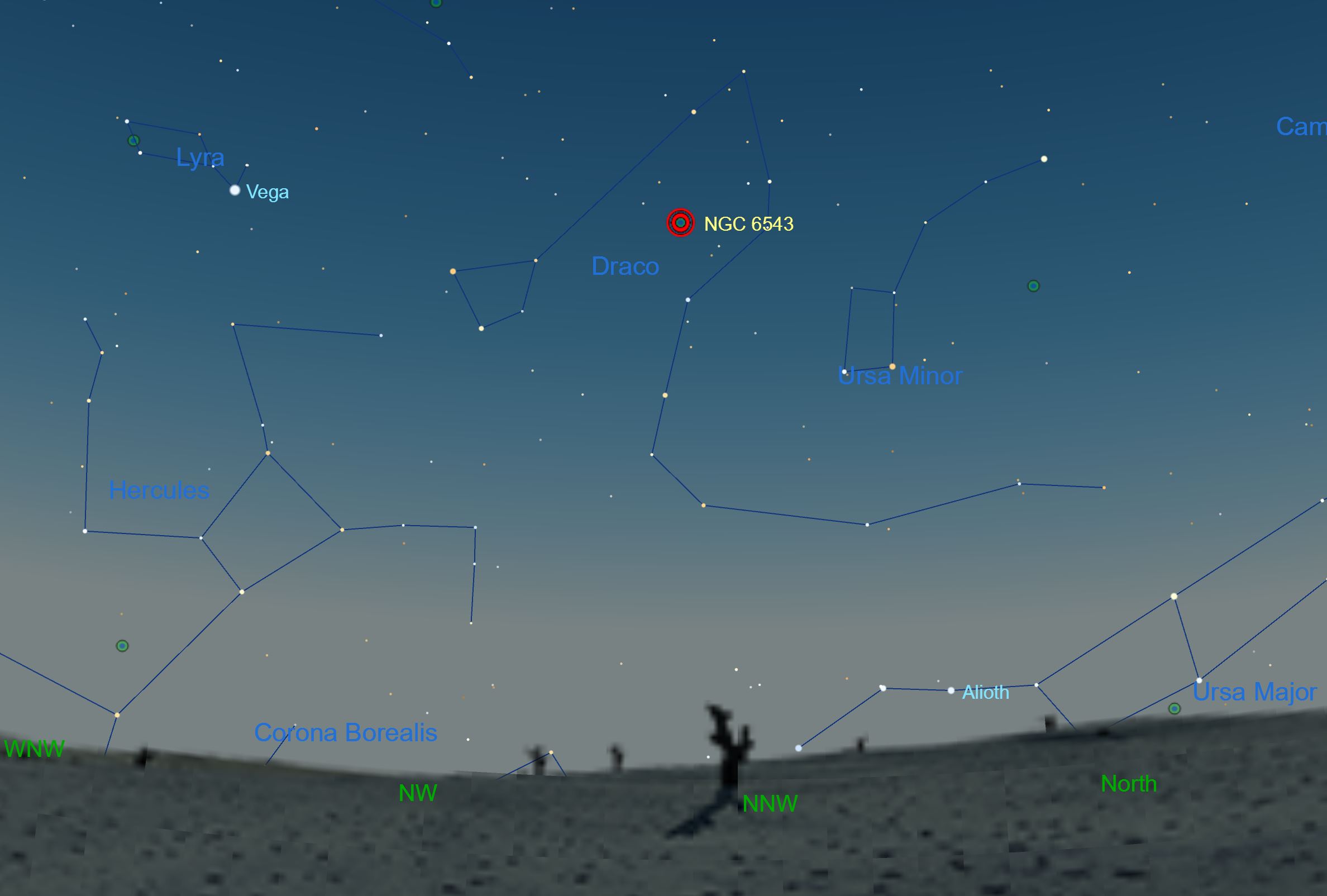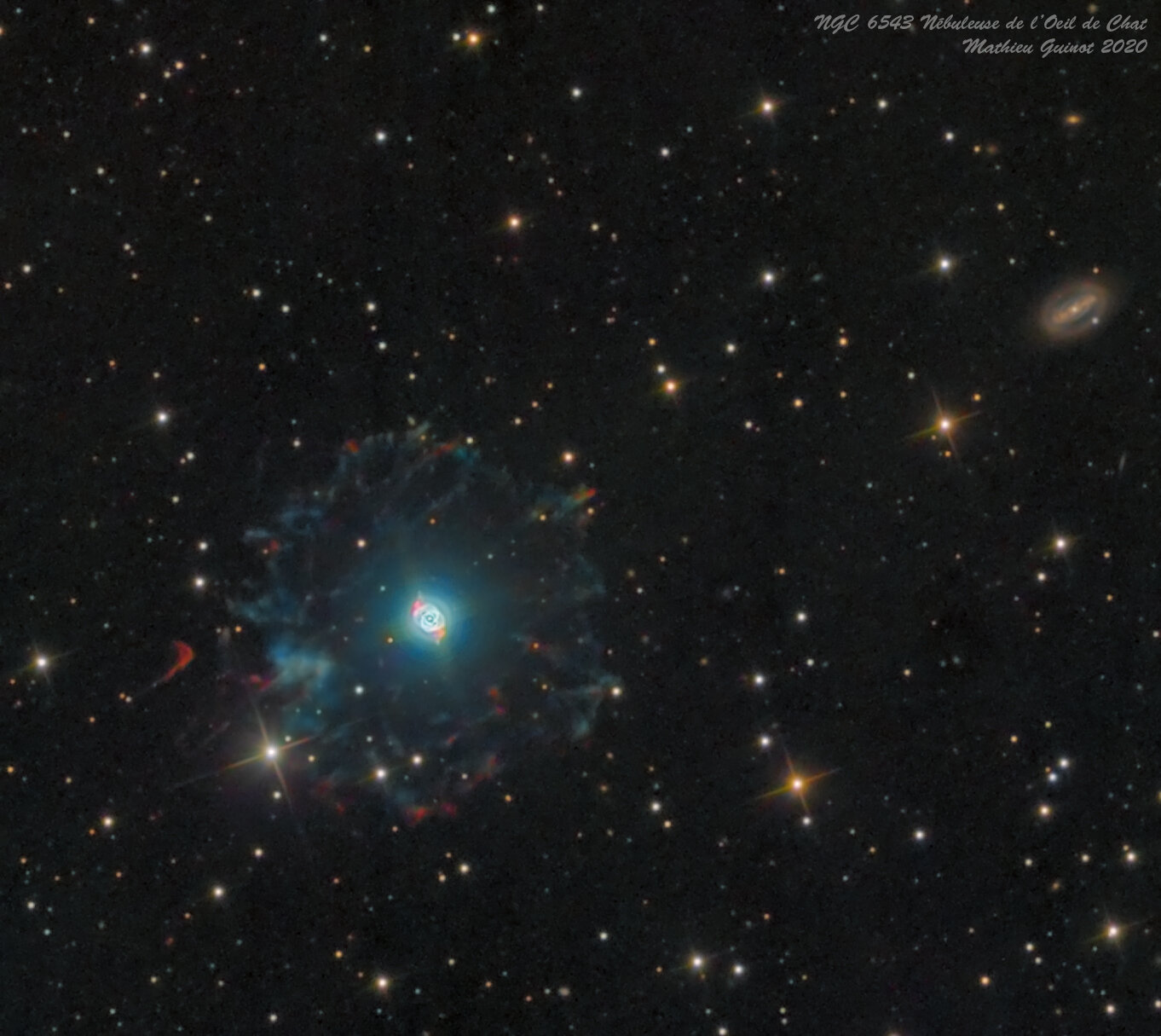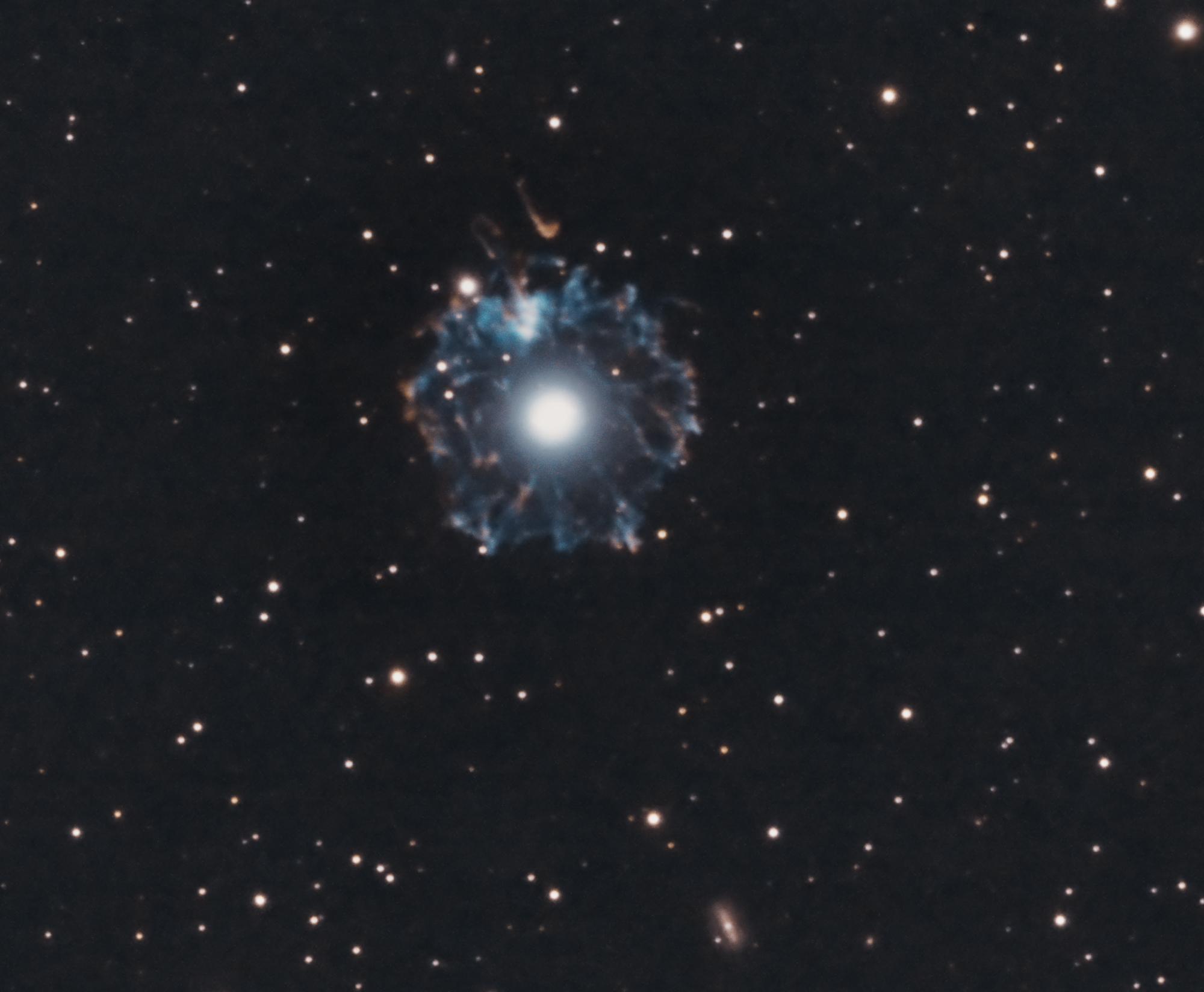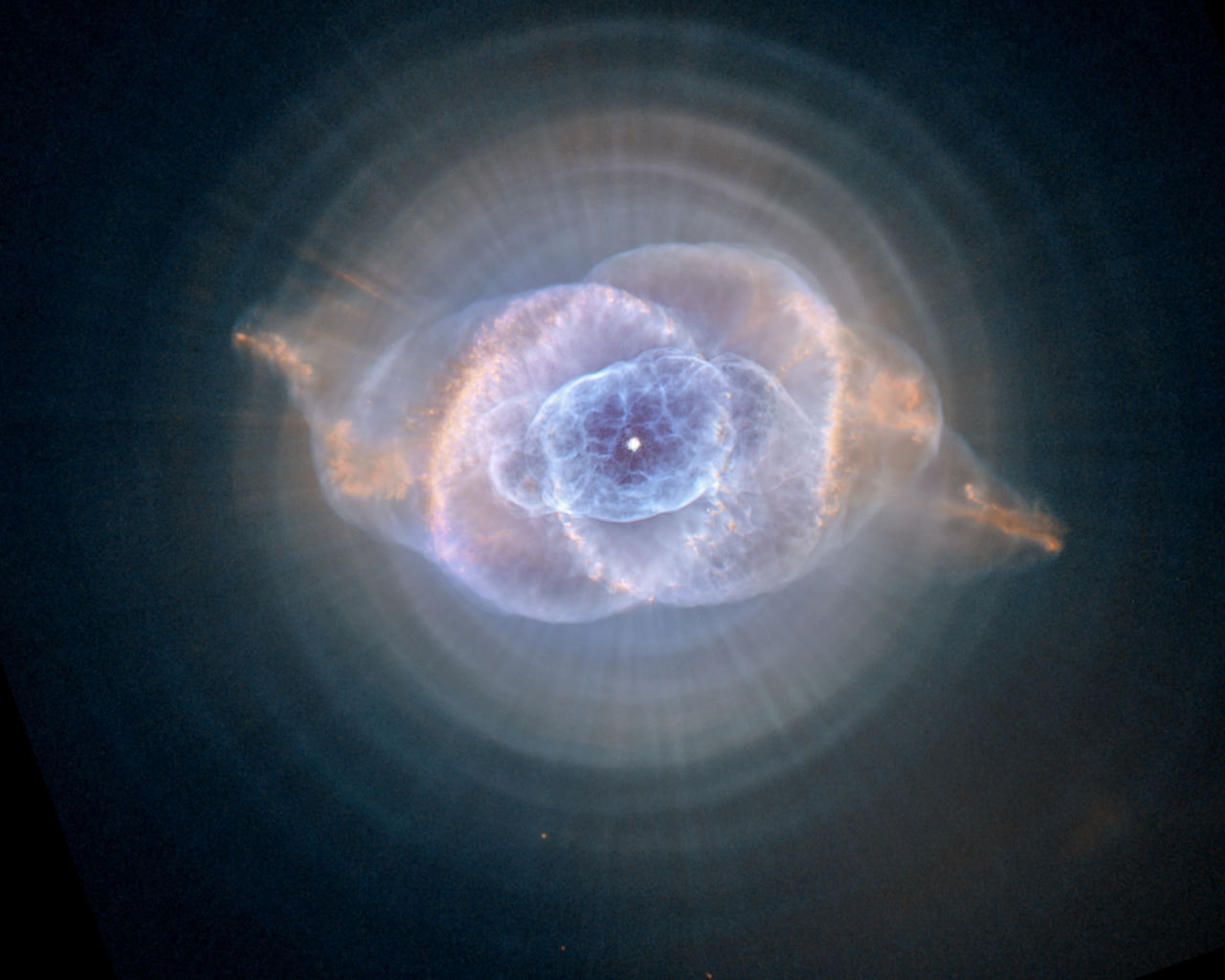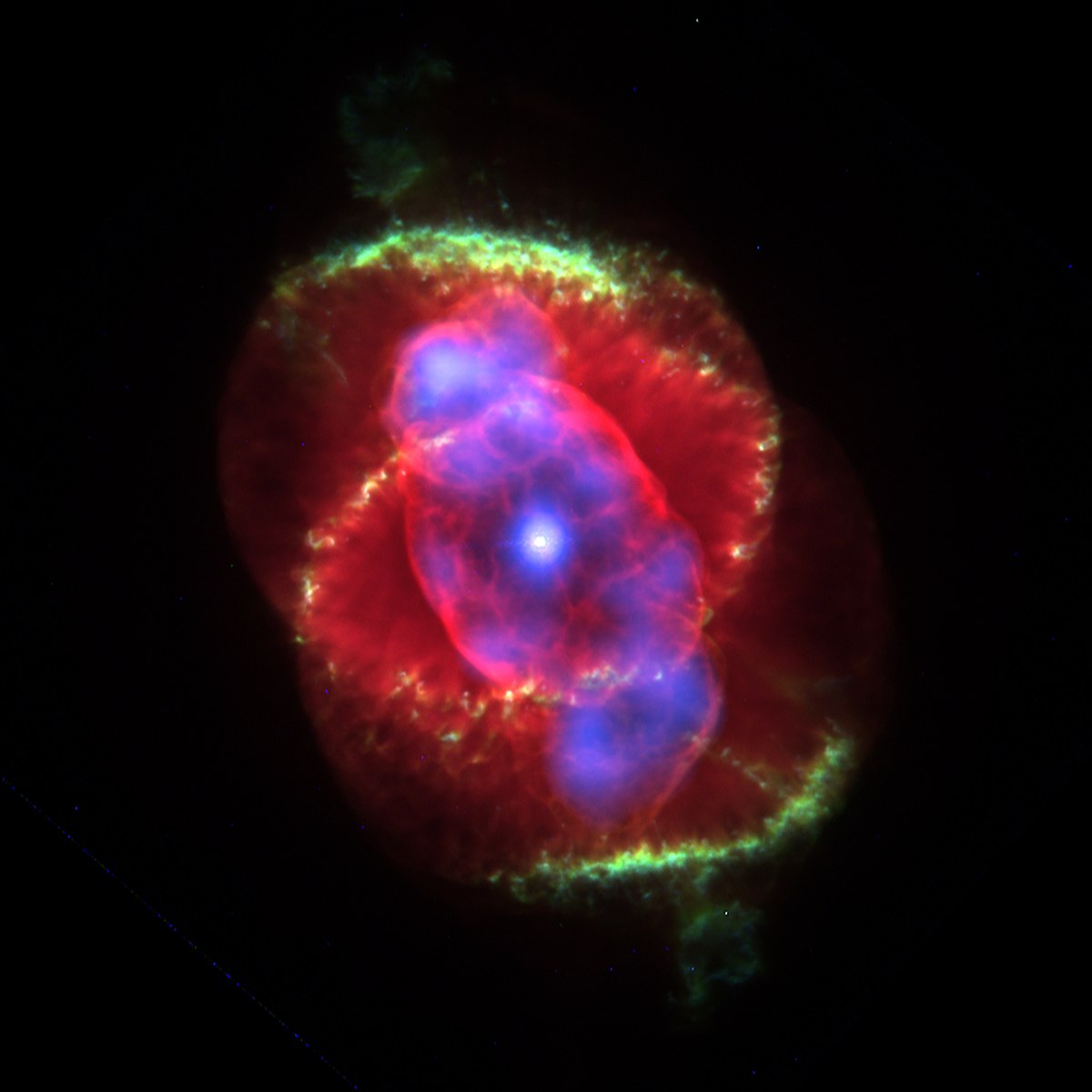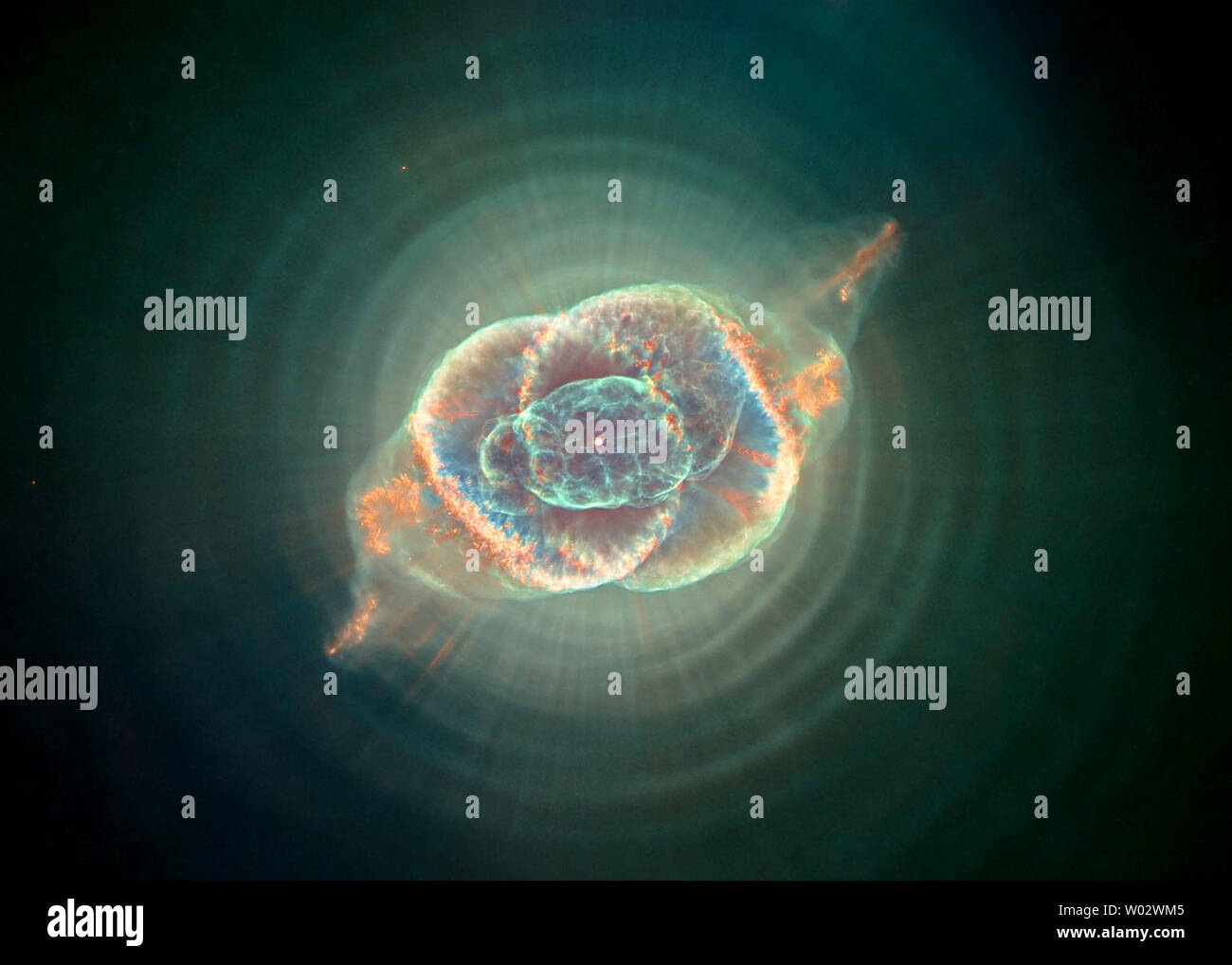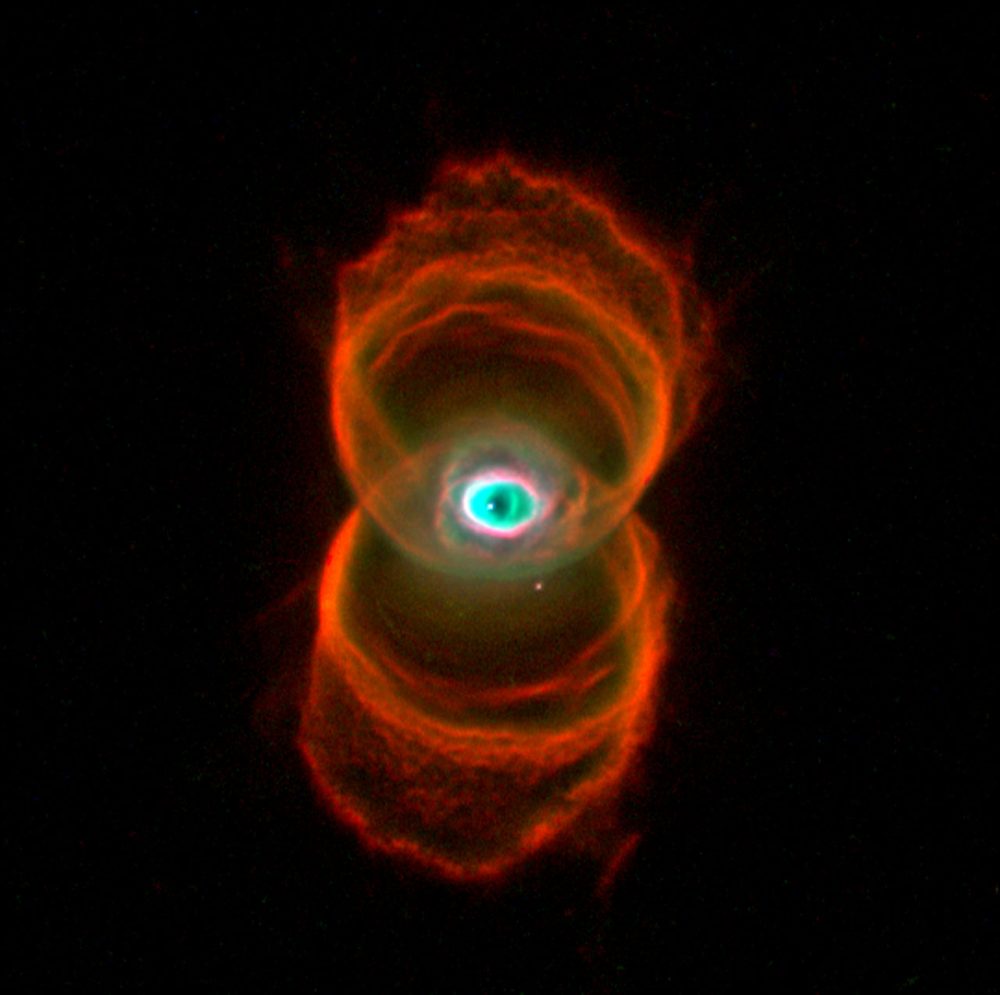Cat's Eye Nebula Age

The size and expansion rate of the Cats Eye suggest the nebula is just 1000 years old.
Cat's eye nebula age. The Cats Eye Nebula has a complex intricate structure which includes knots bubbles concentric gas shells and jets of gas as seen in hi-res images taken by the Hubble Space Telescope in 1994. Huggins observations were the first indication that planetary nebulae consist of extremely rarefiedgases. No two look alike.
The central nebula very bright was formed 1000 years ago. Approximately 1000 years ago the pattern of mass loss suddenly changed and the Cats Eye Nebula itself started forming inside the dusty shells. It was the first planetary nebula to have its spectrum measured which demonstrated that it was largely composed of hot gases.
Each ring is actually the edge of a. Known as NGC 6543 it is located 3300 light years from Earth in the constellation Draco. The Spectacular Cats Eye Planetary Nebula 33 Thousands of years ago a star reached the end of its life and began to eject its outer layers forming one of the most complex planetary nebulae in the sky.
It is similar in appearance to the Cats Eye Nebula and the Ring Nebula whose size age and physical characteristics are similar to the Dumbbell Nebula varying only in its relative proximity and the. The full beauty of the Cats Eye Nebula NGC 6543 is revealed in this new detailed view from NASAs Hubble Space Telescope. The Discovery the Cats Eye Nebula.
A planetary nebula forms when Sun-like stars gently eject their outer gaseous layers that form bright nebulae with amazing and confounding shapes. A planetary nebula is the glowing gas ejected during the final stages of evolution of a star similar in mass to our Sun. This image reveals new details of the Cats Eye Nebula catalogued as NGC 6543 one of the most complex planetary nebulae ever seen.
There he built himself a telescope and started to study astronomy. It has been expanding ever since as can be seen by comparing Hubble images taken in 1994 1997 2000 and 2002. In 1994 Hubble first revealed NGC 6543s surprisingly.
